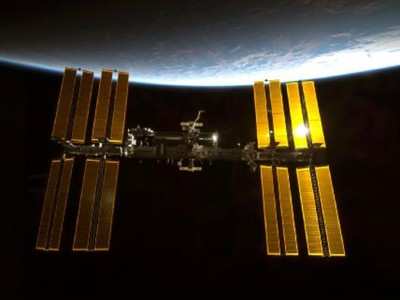Wed, Sep 15, 2010
Boeing To Continue Engineering Support
 NASA
has awarded a five-year, $1.24 billion contract extension to The
Boeing Co. to continue engineering support of the International
Space Station through Sept. 30, 2015.
NASA
has awarded a five-year, $1.24 billion contract extension to The
Boeing Co. to continue engineering support of the International
Space Station through Sept. 30, 2015.
Work under the contract extension is intended to maintain the
station at peak performance levels so the full value of the unique
research laboratory is available to NASA, its international
partners, other U.S. government agencies and private companies.
NASA officially accepted the space station from Boeing at the
conclusion of a March 2010 Acceptance Review Board that verified
the delivery, assembly, integration and activation of all hardware
and software required by the contract. The acceptance signified the
transition from assembly of the station to utilization.
This action extends the space station’s Vehicle Sustaining
Engineering Contract, which was originally awarded in January 1995
and most recently extended in 2008. The extension brings the total
contract value through the end of fiscal year 2015 to $16.2
billion.

Work under the contract extension will include sustaining
engineering of station hardware and software, and support of U.S.
hardware and software provided to international partners and
participants in the station program. The extension also includes
end-to-end subsystem management for the majority of station
systems, including materials and processes, electrical, electronic,
and electromechanical parts, environments and electromagnetic
effects.
NASA and its international partner agencies are in the final
stages of analyzing the ability to sustain station operations
through 2020 and awaiting formal confirmation of this goal by the
governments of participating countries. This contract extension
also includes assessment of the feasibility of extending the life
of the primary structural hardware that was installed in orbit
through the end of 2028.

The work will be performed at NASA's Johnson Space Center in
Houston, Kennedy Space Center in Florida, Marshall Space Flight
Center in Huntsville, Ala., and at other domestic and international
locations.
More News
Light Gun A handheld directional light signaling device which emits a brilliant narrow beam of white, green, or red light as selected by the tower controller. The color and type of>[...]
"The journey to this achievement started nearly a decade ago when a freshly commissioned Gentry, driven by a fascination with new technologies and a desire to contribute significan>[...]
Aero Linx: JAARS, Inc. For decades now, we’ve landed planes on narrow rivers and towering mountains. We’ve outfitted boats and vehicles to reach villages that rarely se>[...]
"Our driven and innovative team of military and civilian Airmen delivers combat power daily, ensuring our nation is ready today and tomorrow." Source: General Duke Richardson, AFMC>[...]
Aircraft Conflict Predicted conflict, within EDST of two aircraft, or between aircraft and airspace. A Red alert is used for conflicts when the predicted minimum separation is 5 na>[...]
 ANN's Daily Aero-Term (04.20.24): Light Gun
ANN's Daily Aero-Term (04.20.24): Light Gun Aero-News: Quote of the Day (04.20.24)
Aero-News: Quote of the Day (04.20.24) ANN's Daily Aero-Linx (04.21.24)
ANN's Daily Aero-Linx (04.21.24) Aero-News: Quote of the Day (04.21.24)
Aero-News: Quote of the Day (04.21.24) ANN's Daily Aero-Term (04.21.24): Aircraft Conflict
ANN's Daily Aero-Term (04.21.24): Aircraft Conflict





